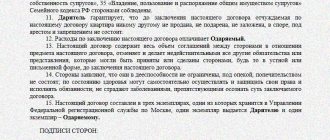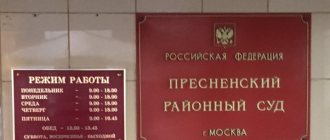Who pays land tax
Land tax is paid by land owners and those whose land is in permanent (perpetual) use or lifelong inheritance.
There is no need to pay tax in the following cases:
- the use of land is registered free of charge, for a certain period;
- the plot is rented under a contract;
- the plot is exempt from taxation (in accordance with clause 2 of article 389 of the Tax Code of the Russian Federation).
Benefits are provided for taxpayers:
- Federal. The list of organizations exempt from tax is given in Art. 395 Tax Code of the Russian Federation. Also, indigenous peoples do not pay the tax. And for the citizens listed in Art. 391 of the Tax Code of the Russian Federation, a reduction in the tax base is provided.
- Local. They are established by regulations of local governments and the laws of federal cities - Moscow, St. Petersburg and Sevastopol.
Thus, in the Trans-Baikal Territory, disabled people of groups 1 and 2, disabled people from childhood, veterans and disabled people of the Great Patriotic War, and persons affected by the disaster at the Chernobyl nuclear power plant are completely exempt from paying land tax.
In other regions, both individuals and legal entities may be exempt from tax. In addition, there is a decrease in the tax base.
In Moscow, a 30% discount is provided for sanatorium-resort organizations and healthcare institutions - according to the Moscow city law “On Land Tax” dated November 24, 2004 No. 74 (as amended on January 1, 2019). In Yekaterinburg, local authorities provide Heroes of the Soviet Union with a benefit in the amount of 100 thousand rubles. (decision of the Yekaterinburg City Duma dated November 22, 2005 No. 14/3).
Payment order
Municipal authorities issue special decrees that set payment deadlines.
According to them, taxpayers must transfer the required amounts of taxes. Tax officers send notifications that may contain information about no more than 3 tax periods. Taxpayers receive notice no later than one month before the payment deadline. Since the calculations are made by the inspectorate, in case of incorrect calculations, individuals are not liable. They can contact the inspectorate to recalculate the tax amount and receive a new receipt. It's better to do this before paying. But you can pay the existing receipt, and then write an application to recalculate the amount and return the overpaid funds.
If the incorrect amount was paid by an individual entrepreneur or legal entity, penalties will apply. This is due to the fact that they are required to independently calculate and fill out the payment order.
Land taxes are paid taking into account the cadastral value. It is unacceptable to use a different tax base. Information about it is contained in Rosreestr and the Federal Tax Service. If there is no information about the cadastral value of the plot, you must contact the BTI.
Here you fill out an application with a request to send a specialist to conduct an assessment. Along with it, a copy of the passport and title documents for the land are presented. BTI specialists draw up plans for the property. Based on the assessment results, a cadastral plan with a diagram and technical documentation is issued.
Information on cadastral value is necessary not only for calculating taxes, but also for concluding any transactions. This applies to the sale or donation of land. It is also necessary to impose an encumbrance in the event of a mortgage or for other reasons.
Deadline for payment of land tax
Starting from 2021, it is not required to submit a land tax return (federal law dated April 15, 2019 No. 63-FZ). The tax payment deadline has become the same for everyone: it has been postponed to March 1 of the following reporting year (Federal Law No. 325-FZ dated September 29, 2019). That is, organizations must pay tax for 2021 no later than 03/01/2021.
Individuals and individual entrepreneurs equated to individuals are required to pay tax for 2021 by December 1, 2021 (Clause 1 of Article 397 of the Tax Code of the Russian Federation).
Also, during the tax period - a year - organizations can pay advance payments based on the results of the first, second and third quarters as ¼ of the annual tax amount (clause 6 of Article 396 of the Tax Code of the Russian Federation). Payment of advance payments is provided for by the laws of the municipality (clauses 2 and 3 of Article 397 of the Tax Code of the Russian Federation).
You can get acquainted with the deadlines in detail using the Federal Tax Service service. It is necessary to select the type of tax and the subject of the Russian Federation.
Legislation
The following Russian laws regulate the issue under consideration:
- Tax Code of the Russian Federation. It consists of two parts, namely, Chapter 31 of the second part of the Tax Code of the Russian Federation is devoted to land tax (who is the taxpayer, what relates to the objects of taxation, what tax base is applied, what benefits for paying land tax are provided, etc.).
- Special Federal Law No. 101-FZ of July 24, 2002, called “On the turnover of agricultural land.” It is dedicated specifically to agricultural land, what it includes, what actions can be carried out with such land plots and what restrictions there are. In addition to those that fall within the competence of the Land Code of the Russian Federation.
- Land Code of the Russian Federation. It regulates the circulation of agricultural land plots, but only those intended for gardens, vegetable gardens, dachas, garage construction and the placement of real estate on them.
Following the official definition, agricultural land refers to areas located outside populated areas and allocated specifically for agriculture. This could be farming or subsidiary farming.
And if we are talking about cooperative land, then on such plots you can plant gardens, vegetable gardens and build summer cottages.
Land tax rates
Tax rates have not changed in 2021:
- 0.3% for agricultural lands, plots of personal subsidiary plots, summer cottages; lands for the needs of the state, housing stock and infrastructure; areas used for national defense, security and customs;
- 1.5% for other lands.
Subjects have the right to set their own rates, but not higher than those accepted at the federal level.
The table below shows examples of rates in Moscow and Yekaterinburg.
How to register a private plot and open a business - a step-by-step action plan
Since personal farming is not a business, there is no need to register an individual entrepreneur. Having registered the allotment, the family is allowed to use it for personal purposes.
To open a business without an individual entrepreneur, you must go through several stages of registration.
Step 1. Contact the city/village administration and submit an application
This stage is necessary to register the plot and obtain a certificate of the presence of the farm. The application must be completed on site.
It must indicate:
- data of the owner or tenant, as well as members of his family with whom he lives;
- area of the plot and its location – cadastral characteristics;
- lease or purchase and sale agreement, the grounds on which you want to receive the allotment;
- list of equipment for work.
Field land plot for personal farming
After reviewing the application, city hall employees will record the private household plot in the household register.
Step 2. Get an allotment diagram
If you do not own land, but the plot is provided for use as state support, you must become its sole owner. To do this, just contact the mayor’s office at your place of residence, indicating your details and the area of the plot to be purchased.
Having received permission to register, you need to visit the land surveying department to correctly determine the boundaries. After the procedure, the owner will be given a land survey document, which will serve as the basis in the cadastral chamber for registering land survey rights and receiving an extract on the right to own the plot.
Step 3. Waiting for the boundaries to be approved
Based on the allotment’s passport, specialists will conduct a commission to approve the boundaries and, if the decision is positive, transfer it into ownership or lease. Only the decision of the head of the district administration on the transfer of ownership is considered valid.
Step 4. Submit documents for assignment of a cadastral number
The documents are submitted (the list is described in the next section) to the cadastral chamber.
Step 5. Confirm and register ownership
Rosreestr provides: a certificate of ownership of the plot, an act of the executive committee and an extract from the household accounting book. These documents are sufficient to prove ownership.
Step 6. Decide on the type of activity and start the business
All types of crops can be grown. Use any amount of space for greenhouses. In addition to growing vegetables and fruits, it is allowed to breed agricultural animals of all types, poultry and bees, so there are no restrictions on business ideas.
You have the right to breed small livestock, poultry, including broiler chickens, ostriches, or focus on organic products.
Keep in mind that the law states: subsistence farming is created to meet the food needs of the owner and his family. And only surplus grown products are allowed to be sold.
People often confuse peasant farming and personal farming.
The table of differences will help you figure it out:
| Type of activity/differences | peasant farm | Private household plots |
| Taxation | There is payment of taxes, since peasant farms are entrepreneurial activities. | No business activity, no tax payment. |
| Membership | Provides. Relatives from a maximum of three families can become members. It is also possible to attract citizens who are not related to the head of the peasant farm (no more than 5 people). | Membership is not provided. |
| Registration | Mandatory. | Not required. |
| Purpose | The goal is to sell grown products. | The goal is to provide food for the family. |
| Land size | Provided by the state - maximum size 5 hectares. It is owned by a peasant farm - the area is not limited. | The maximum size allowed for everyone is 0.5 hectares. In some cases, an increase to 2.5 hectares is possible. |
Calculation of land tax
To calculate land tax, the formula is used:
Land tax = Tax base × Tax rate
The tax base is the cadastral value of the land plot as of 01/01/2020. This information is provided by Rosreestr upon request in person or on the official website of the department. For more information about the tax base, see Art. 391 Tax Code of the Russian Federation.
When a land plot has several owners and a purchase or sale of land was made in the reporting year, the formula will look like this:
Land tax = Kst × St × D × Kv,
Where:
Kst - cadastral value;
St - tax rate;
D - share in land ownership;
Kv - coefficient of land ownership in months.
Let's look at an example of calculating land tax:
Ivanov I.A. purchased a plot of land for gardening in the Moscow region on 04/09/2020. The property was registered in the name of I. A. Ivanov, his wife and two children in equal shares. The cadastral value of the plot is RUB 2,354,500.
The tax rate is 0.3%.
Land tax for I. A. Ivanov is equal to:
2,354,500 × 0.3% × 0.25 × 0.75=RUB 1,324.41,
where 0.25 is ¼ share in the property, 0.75 is the ownership coefficient (9 months / 12 months).
When calculating the number of months of ownership, the following feature is taken into account:
- if the plot was purchased before the 15th day of the current month inclusive, then this month is included in the calculation. If the property is registered after the 15th, the month is not taken into account;
- If the land is sold by the owner before the 15th day, then the month of sale is not taken into account for tax purposes. If after the 15th day, it is taken into account (clause 7 of Article 396 of the Tax Code of the Russian Federation).
Rate indicator depending on region
Payment for land used for agricultural purposes is levied at the tax rate specified by part one of subparagraph 1 of paragraph 1 of Article 394 of the Tax Code of the Russian Federation. The rate limit is 0.3% .
At the same time, the authorities of the locality have the right to reduce the tax rate or leave it at the maximum level.
For example, the highest rate that can be applied to land tax is established for other categories of land and is equal to 1.5% (5 times higher than for agricultural land).
Considering that the size of the rate depends on what decision is made by local councils of deputies (legislative bodies of state power in cities of federal significance), the specific rates of rates can be found in the regulations in force in the territory of the city or village.
A convenient service for searching for documents regulating land tax rates is available on the official website of the Federal Tax Service of Russia: https://www.nalog.ru/rn77/service/tax/.
We present in the following table the rates applied in some cities.
| City | Bid, % |
| Moscow | 0,3 |
| Moscow region: | |
| Korolev | 0,3 |
| Balashikha | 0,3 |
| Podolsk | 0.1 for scientific-experimental and experimental agricultural enterprises; 0.3 for others |
| Saint Petersburg | 0,3 |
| Leningrad region: | |
| Vyborg | 0,3 |
| Gatchina | 0,3 |
| Otradnoe | 0,3 |
| Krasnodar region: | |
| Krasnodar | 0,3 |
| Sochi | 0.03 for lands within agricultural use zones in populated areas; 0.3 |
| Gelendzhik | 0.05; 0.3 (depending on what land is occupied) |
| Armavir | 0,1 |
| Novosibirsk region: | |
| Novosibirsk | 0,3 |
| Kuibyshev | 0,3 |
| Berdsk | 0,3 |
| Ob | 0,3 |
| Republic of Adygea: | |
| Maykop | 0,15 |
| Adygeisk | 0,3 |
It must be stated that in many localities in Russia they prefer not to reduce the rate provided for by the Tax Code of the Russian Federation, but to leave it at 0.3%.
If agricultural lands are not used for their intended purpose, then a tax rate of 1.5% will be applied to them, as for other categories of land (the penalties for misuse of land or non-use of such plots are discussed here). Many official documents adopted by local authorities expressly stipulate this.










